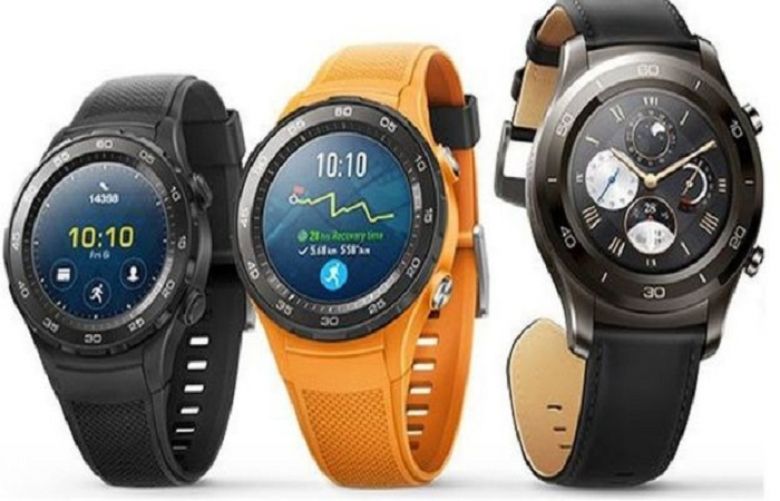Huawei has decided not to use the wearable-tech version of Android in its latest smartwatch, opting instead for an in-house operating system.
The company said the decision to use Lite OS had been taken in part to maximise battery life.
It marks a setback to Google's Android-based Wear OS, which ran Huawei's last two generations of smartwatches.
The Chinese company also unveiled a smartphone with a unique wireless power facility.
The Mate 20 Pro can: be recharged without having to be plugged in, wirelessly power other compatible devices
Extended life
Android dominates the smartphone market, accounting for about 85% of all shipped handsets, according to IDC.
However, its dominance did not extend to smartwatches, the market research company said.
None of the five top-selling smartwatch brands currently uses Wear OS and it is installed on only 10.3% of all smartwatches shipped within the July-to-September period in Western Europe, according to IDC's data.
Instead, Apple, Fitbit, Samsung and Garmin are among those to have adopted proprietary platforms. Now, Huawei is doing the same for its Watch GT.
Lite OS had previously been used by Huawei to power a more basic fitness tracker. In addition, it has been licensed by others to power smart doorbells, internet-connected letterboxes, streetlights and smart energy meters, among other products.
Huawei said one benefit of its move was to make use of Watch GT's new "dual chipset architecture":
a low-power-consumption section for simple tasks, including sleep analysis
a more battery-hungry segment for complex activities, such as providing sports coaching tips
And the device now offered three modes with differing battery life:
up to 30 days if the smart capabilities were limited to showing notifications received via a smartphone and monitoring the user's heart rate
at least two weeks if sleep analysis is also provided, in addition to a total of 180 minutes of active exercise-tracking
22 hours if all the sensors were turned on and the screen kept lit
The timepiece is compatible with both iOS and Android handsets.
"Huawei has been very clear that it wants to compete more with Fitbits and Garmins than true smartwatches with their own [data] connectivity," said Marta Pinto, from IDC.
"It said it has surveyed what people do with a watch and has tried to cover the things people actually use."
She added that one benefit of offering more limited abilities was that the Watch GT's price was lower than its predecessors - between €199 (£174) and €249, depending on the design.
Smartwatch owners typically use fewer apps on any of the various platforms than had once been forecast. But one industry-watcher suggested Huawei's device could be too limited.
"The battery life is massive but will that make up for the lack of [the social fitness network] Strava on there?" asked David McQueen, from the consultancy ABI.
"You can't even play music from it. It's quite a dumbed-down device.
"Perhaps people don't want a smartphone on their wrist with all the applications that involves - but you still need the key ones."







